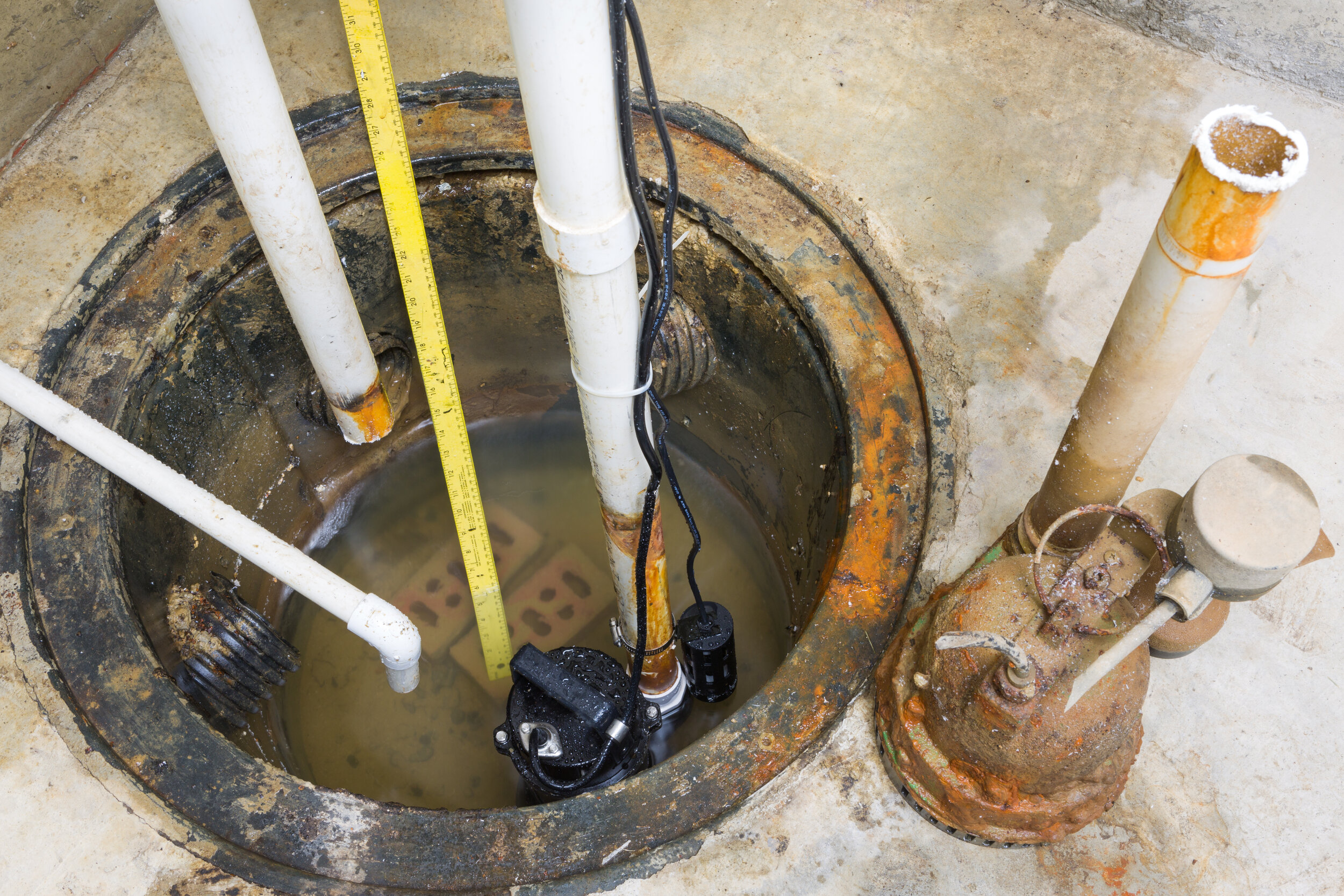Sump Pump 101: Operation and Inspection Guide
Sump pumps are self-activating electrical pumps that protect homes from moisture intrusion. They are usually installed below the basement or crawlspace floors to remove rising groundwater and surface runoff before it has a chance to seep into the home.
Accumulated water can cause interior damage and encourage the growth of mold, mildew, and fungus. Pumps should be maintained and equipped with all the necessary components in order to ensure their reliability.
How a Sump Pump Works
A pit, known as a sump pit or sump trench, can be dug at the lowest part of the basement floor to capture and contain any flowing water. A sump pump sits at the bottom of this trench (or beside it) and expels excess water through a series of interconnected pipes to a suitable discharge location. The pump can sense water levels through a float that rises and falls with fluctuating water levels in the trench. The sump pump becomes activated and deactivated based on the height of the float, providing a simple, automated way to monitor and deal with variable water levels.
Types of Sump Pumps
Pedestal sump pumps sit above the water line beside the sump trench and are not designed to get wet. Since they are not contained within the sump pit, they can be accessed easily but are also very noisy. They cost roughly $60 to $200, which is significantly less than other varieties.
Submersible sump pumps rest underwater at the bottom of the sump pit and are much quieter than pedestal pumps. Their oil-cooled motors and tight seals protect against water and dust and afford them a long lifespan. They can cost up to $600.
Water-powered sump pumps are normally used as backups and kick in when the main pump experiences an electrical or mechanical failure.
Maintenance
The pump must be kept clean and free of debris. The inlet screen prevents the passage of dirt and other solid material from entering the pump, but it can become overwhelmed. Cleanings should occur often for pumps that run constantly.
Make sure that the float is not tangled or jammed in one position. A sump pump with a jammed float is useless because it will not sense when it should turn on and shut off.
The pump can be tested by pouring water into the pit to make sure it becomes activated and expels the water. The homeowner should seek professional assistance if the pump does not activate.
Maintenance should take place annually, and when the home is sold.
When testing the pump, no one should ever reach into the pit. The float can be reached and manipulated with a household item such as a golf club (with a rubber handle) or anything else non-conductive that happens to be lying around.
Typical installations could include the following:
A GFCI duplex outlet. There is considerable debate among inspectors concerning whether or not a sump pump should be connected to a GFCI. It is possible that a GFCI can prevent electrocution, but it is extremely unlikely that a sump pump will energize water in the first place. It is much more likely that a GFCI will trip during safe conditions and deactivate the sump pump when it is needed. A sump pump is among the most critical of all household appliances, and its deactivation, especially if the tenants are not home, could allow catastrophic building damage. Codes recommend that appliances in basements and crawlspaces be connected to GFCIs to reduce the chance of electrical shock, but this advice is often ignored due to these concerns over nuisance tripping.
An alarm. Sump pumps can burn out, lose power, become clogged or misaligned, or malfunction in a variety of other ways. It is valuable to have a warning device installed that will signal water build-up. These alarms can alert homeowners or neighbors of flooding so that they can be resolved before water damage occurs. Alarms are especially important in residences that are not occupied for long periods of time.
A check valve. This device is the same diameter as the discharge pipe into which it fits and is usually a different color. A check valve should be installed in order to prevent pumped water in the discharge line from re-entering the sump pit when the device is turned off. Without this valve, the pump will have to work twice as hard to remove the same column of water, which causes unnecessary strain to the pump components. A check valve can also prevent the rare yet disturbing possibility that a discharge line connected to a stream or pond will back-siphon into the sump pit.
A backup power source. Power outages are most likely to happen during heavy rains and floods, which are situations when the sump pump is most needed. For this reason, combined with the nuisance-tripping from GFCIs, sump pumps should have a backup power source to rely on. A pump powered by a battery or the home’s water pressure can also be installed as a backup. Installation of a backup power source or backup pump is not a requirement but can be a recommendation for homes at higher risk.
Properly sized pit or crock. The sump pit does not need to be constructed from any particular material, as long as it is solid and provides permanent support for the pump. It must, however, be large enough to allow the pump room to work properly. Some homeowners use a 5-gallon bucket as a sump pit, but this is insufficient. For most homes, the sump pit should not be less than 24 inches deep and 18 inches wide. One of the most common reasons why sump pumps fail is that the float gets jammed between the pump and the pit because the pit is too small.
An attached cover. The sump pit should be covered to prevent water from evaporating into the home and to prevent items from falling into it.
Properly routed discharge line. The discharge line (typically PVC pipe) should route the shortest distance from the pit to the outside wall, properly supported by pipe hangers, and should be properly sealed at the wall connection to prevent insect infiltration, moisture intrusion, or energy losses.
Discharge Location:
Water must be discharged at least 20 feet from the building.
Water should not drain back into the house! Cycling water will place unnecessary strain on the pump and can weaken the structure’s foundation.
Water should not drain onto a neighbor’s property without their approval.
Many jurisdictions do not permit pumped water into public sewer systems.
Pumped water should never drain into a residence’s septic system. Especially during heavy rain, a septic drain field will become saturated and will struggle to handle the normal flow of water from the house. Additional water from the sump pump can damage the septic system.
In summary, sump pumps are used to remove excess water from homes that would otherwise cause property damage. There are multiple types, but they all monitor water levels and ensure that they do not rise higher than predetermined levels. Proper maintenance and inspection will ensure pump efficiency and prolong their lifespan.
Based on original content by Nick Gromicko and Kenton Shepard


